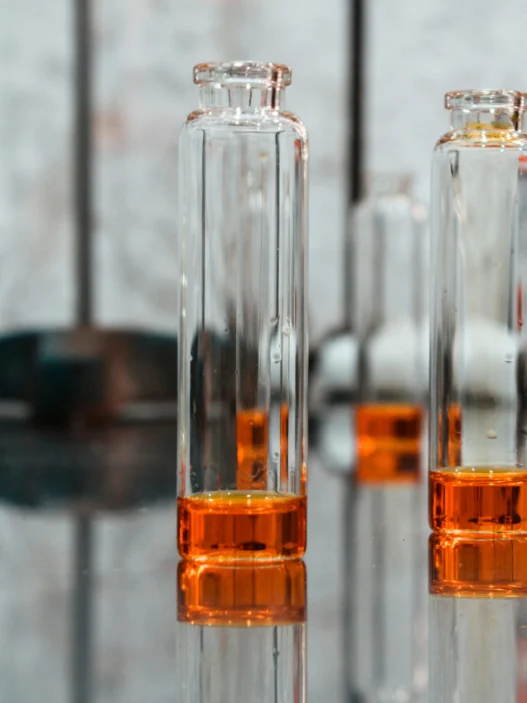Cupric sulfate, a chemical compound commonly used in industry and agriculture, plays a significant role in everyday life. It is utilized in a diverse range of applications, including the manufacturing of pesticides, animal feed supplements, and as a colorant in various products such as ceramics and textiles. Cupric sulfate also serves as a critical component in the production of lithium-ion batteries, which are integral to the operation of numerous consumer electronics devices. Furthermore, cupric sulfate is employed in the laboratory setting for various analytical and chemical processes. Overall, the widespread use of cupric sulfate underscores its importance and relevance in modern society.
Table of Contents:
- 💡 Commercial Applications
- ⚗️ Chemical & Physical Properties
- 🏭 Production & Procurement
- ⚠️ Safety Considerations
- 🔬 Potential Research Directions
- 🧪 Related Compounds
💡 Commercial Applications
Cupric sulfate, also known as copper(II) sulfate, has various commercial and industrial applications. It is commonly used as a fungicide in agriculture to control various fungal diseases on crops. Additionally, cupric sulfate is utilized in the production of animal feed additives to ensure proper nutrition for livestock.
In industry, cupric sulfate is used in the formulation of chemicals such as herbicides and wood preservatives. It is also employed in the manufacturing of pigments, dyes, and insecticides. Furthermore, cupric sulfate is utilized in the production of batteries, as a component in electroplating processes, and in the preparation of catalysts for chemical reactions.
Cupric sulfate also has drug and medication applications. It is used in the pharmaceutical industry to treat copper deficiency in humans and animals. Additionally, cupric sulfate has antibacterial properties and is incorporated into various topical medications to treat skin conditions such as eczema and acne. Furthermore, cupric sulfate is utilized in the formulation of dietary supplements to ensure adequate copper intake for individuals.
⚗️ Chemical & Physical Properties
Cupric sulfate, also known as copper(II) sulfate, is a bright blue solid with a slight odor of sulfur. It is commonly found in the form of crystals or powder, and is known for its distinct color and toxicity.
The molar mass of cupric sulfate is approximately 159.61 g/mol, and its density is around 3.60 g/cm³. In comparison to common food items, cupric sulfate has a higher molar mass and density than substances such as sugar or salt.
Cupric sulfate has a melting point of 110 °C and a boiling point of 1,645 °C. These properties make it relatively stable at room temperature compared to common food items. For example, sugar melts at much lower temperatures whereas water boils at a much lower temperature.
Cupric sulfate is highly soluble in water, with a solubility of 31.6 g/100 mL at 20 °C. It has a low viscosity, allowing it to easily dissolve in water. In comparison to common food items, cupric sulfate has a much higher solubility in water and lower viscosity than substances like flour or cornstarch.
🏭 Production & Procurement
Cupric Sulfate, also known as copper sulfate, is commonly produced through the reaction of copper oxide with sulfuric acid. This process yields a blue crystalline solid which is further processed and purified to meet industry standards.
The procurement of Cupric Sulfate can be done through various means, including purchasing from chemical suppliers or production facilities. It is typically transported in solid form in containers or bags, ensuring proper labeling and handling to prevent contamination or spills during transit.
Once procured, Cupric Sulfate should be stored in a cool, dry place away from incompatible materials to maintain its stability and quality. It is important to follow safety guidelines when handling this chemical compound to prevent any accidents or adverse reactions.
⚠️ Safety Considerations
Safety considerations for Cupric Sulfate (CuSO4) include its classification as a hazardous substance with potential for acute toxicity if ingested or inhaled. This compound can cause irritation to the skin, eyes, and respiratory tract upon contact, and prolonged or repeated exposure may result in more serious health effects. Proper handling and storage practices should be followed to minimize the risk of exposure to Cupric Sulfate, including the use of appropriate personal protective equipment such as gloves, goggles, and respiratory protection.
Hazard statements for Cupric Sulfate include “Harmful if swallowed,” “Causes skin and eye irritation,” and “May cause respiratory irritation.” This compound is classified as a Category 4 acute toxicity hazard for oral, dermal, and inhalation routes of exposure. Cupric Sulfate should be handled with care to prevent accidental ingestion, contact with skin or eyes, and inhalation of fumes or dust particles.
Precautionary statements for Cupric Sulfate include “Wear protective gloves/eye protection/face protection,” “Avoid breathing dust/fume/gas/mist/vapors/spray,” and “Wash hands thoroughly after handling.” It is important to utilize appropriate personal protective equipment, such as gloves, goggles, and respiratory protection, when working with Cupric Sulfate to prevent skin and eye irritation, as well as respiratory irritation from inhalation. Proper hygiene practices, such as washing hands thoroughly after handling, should also be observed to minimize the risk of exposure to this hazardous substance.
🔬 Potential Research Directions
Research on Cupric Sulfate poses a variety of potential directions for further study. One area of interest could focus on its use as a fungicide or herbicide in agriculture, exploring its effectiveness compared to other chemicals. Furthermore, investigations into its role as a catalyst in chemical reactions may provide insights into its potential applications in industrial processes.
Another avenue for research could involve the study of Cupric Sulfate’s potential health effects, both beneficial and harmful. This could include examining its role as a micronutrient in humans and animals, as well as investigating any potential toxicity or side effects associated with its consumption or exposure. In addition, research on its environmental impact and potential for contamination in water systems could also be explored.
Further research on Cupric Sulfate could delve into its applications in various technological fields. For instance, studying its potential use in batteries or in the production of electronics could lead to advancements in these areas. Additionally, research on its properties as a dye or pigment in the textile and ceramics industries could reveal new possibilities for its usage in these sectors.
🧪 Related Compounds
Cupric sulfate, also known as copper(II) sulfate, has a chemical formula of CuSO4. This compound is a salt of copper and sulfuric acid, and it is commonly used in agriculture, mining, and chemistry.
One similar compound to cupric sulfate is ferric sulfate, also known as iron(III) sulfate, with the chemical formula Fe2(SO4)3. Like cupric sulfate, ferric sulfate is a salt of iron and sulfuric acid. It is commonly used as a coagulant in water treatment, as a catalyst in the synthesis of organic compounds, and as a mordant in dyeing.
Another compound similar to cupric sulfate is nickel sulfate, with the chemical formula NiSO4. This salt is a source of nickel ion, and it is used in electroplating, as a catalyst in organic synthesis, and as a coloring agent in ceramics and glassmaking. Similar to cupric sulfate, nickel sulfate forms hydrated crystals and is soluble in water.





